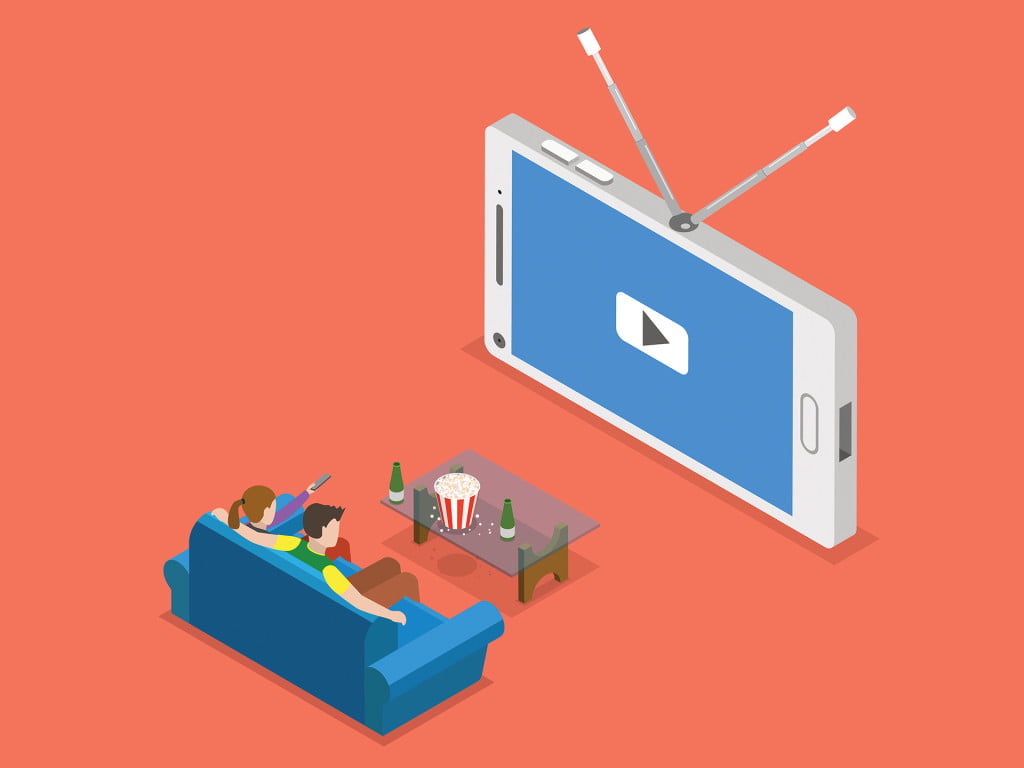 THE ONLINE FUTURE of TV is getting closer. Everyone fromHBO to NBC, Showtime to CBS, is serving up an early iteration on the idea that TV soon will be just another app.
THE ONLINE FUTURE of TV is getting closer. Everyone fromHBO to NBC, Showtime to CBS, is serving up an early iteration on the idea that TV soon will be just another app.
This week, another old-media powerhouse signaled that it gets this is how TV’s future will go down. Disney chairman and chief executive Bob Iger said yesterday that the company, which owns ABC and sports behemoth ESPN, is looking at apps, too. “We’re also very interested in taking products directly to consumers,” Iger said in a call with investors, adding that Disney is launching an on-demand subscription app, DisneyLife, later this year in the UK.
‘We have an opportunity to reach the consumer directly in ways that our competitors can’t come close to doing.’DISNEY CEO BOB IGER
“It speaks to where we’re going as a company,” Iger said.
For the growing ranks of cord-cutters, a future where apps replace channels may seem obvious. Apple CEO Tim Cook certainly seems to think so. But media giants like Disney have long been dependent in part on cable bundles sold by the likes of Comcast and TimeWarner to reap revenue and reach massive numbers of viewers. Those bundles have been hugely profitable for everyone involved, but costly for consumers, some of whom have leapt to embrace à la carte on-demand options streamed over the Internet.
As we near the end of 2015, media giants seem to be finally showing real signs that they understand the future won’t look quite like the past. More crucially, Iger and peers like CBS’ Les Moonves, appear to believe that’s OK. Consumers want great content served the way they want to watch it, and giants like Disney and CBS remain confident that their content is what viewers want to watch. Selling that content to them directly means a more direct source of money.
But, as these companies experiment with how to expand their audiences in the future, the question might not be whether they’ll continue generating billions in revenue, but what will happen to the third-party distributors who count on delivering this content to you. This Internet-fueled shift toward bringing products directly from producer to consumer is not, of course, limited to media. Software companies like Microsoft and car manufacturers like Tesla Motors have realized that they can sell their products successfully by cutting out the middlemen too.
You’ll See More
Of all the major media conglomerates, Disney may be best positioned to find the best way forward. With its many cultural crown jewels, from Marvel to Pixar to Star Wars to ESPN, Disney can rethink distribution knowing people will want its content no matter how they can get it.
“If you look at the profile of this company, outside of the Disney stores and the theme park business, the customer that buys Disney typically buys through third parties,” Iger told investors during the annual earnings call yesterday. “There’s nothing wrong with that, by the way. We do great business with movie theater chains, big box retailers, and multi-channel distributors.”
But, Iger said, given how consumer habits are changing, Disney has real opportunities, too, given what new technologies make possible for leveraging its most popular properties. “We have an opportunity to reach the consumer directly in ways that our competitors can’t come close to doing.
“So it is a competitive advantage and it is an opportunity that technology is providing us—and it’s something ultimately that you’ll see more of,” he said. (Iger has also hinted before that we could one day even see ESPN offered directly.)
Deals Aren’t Forever
At the same time, Disney is still heavily tied to more traditional distribution deals. ESPN relies upon deals with sports leagues like the NFL and providers like DirecTV. Disney has signed a deal with frenemy Netflix, where its films will start cropping up next year. Its many television channels, from ABC to Disney XD, reach viewers with the help of cable and satellite providers.
But on the call Iger acknowledged such deals aren’t forever. Meanwhile, standalone subscription apps are already here, and we can be sure more are coming. HBO Now, which is owned by Time Warner, has the potential to build a very real audience without, say, Comcast or Verizon. The Disney-21st Century Fox-Comcast–owned Hulu serves up a suite of up-to-date shows. The content is what consumers want—and, as Iger points out, we all want the best user experience. If apps can serve our needs better, then apps seem to be what we want. Traditional TV might not go away, but media giants can’t depend on the old ways alone.
As that change happens, the question becomes how third parties, from movie theaters to cable companies, will fare in the world where it might be Apple, Google, and Amazon who serve as the intermediaries for our apps on our phones and devices. As a great unbundling happens and so-called “skinny bundles” of fewer channels become more popular, services will get cut or left behind. And the distributors know this. Comcast and Verizon launched their own video streaming apps this year, a sign that they’re aware their control over what we watch is quickly slipping away.
[“source-wired”]





